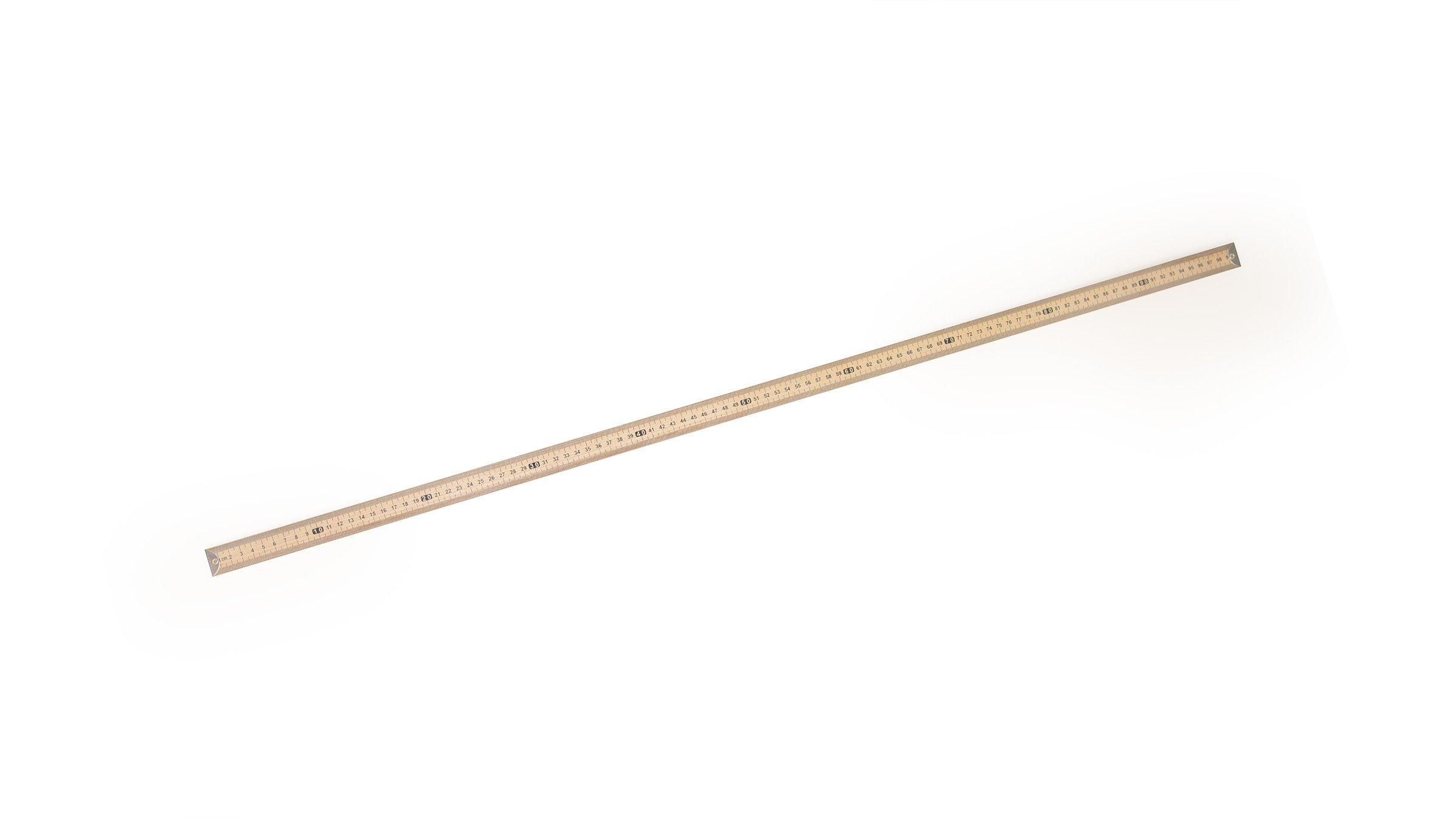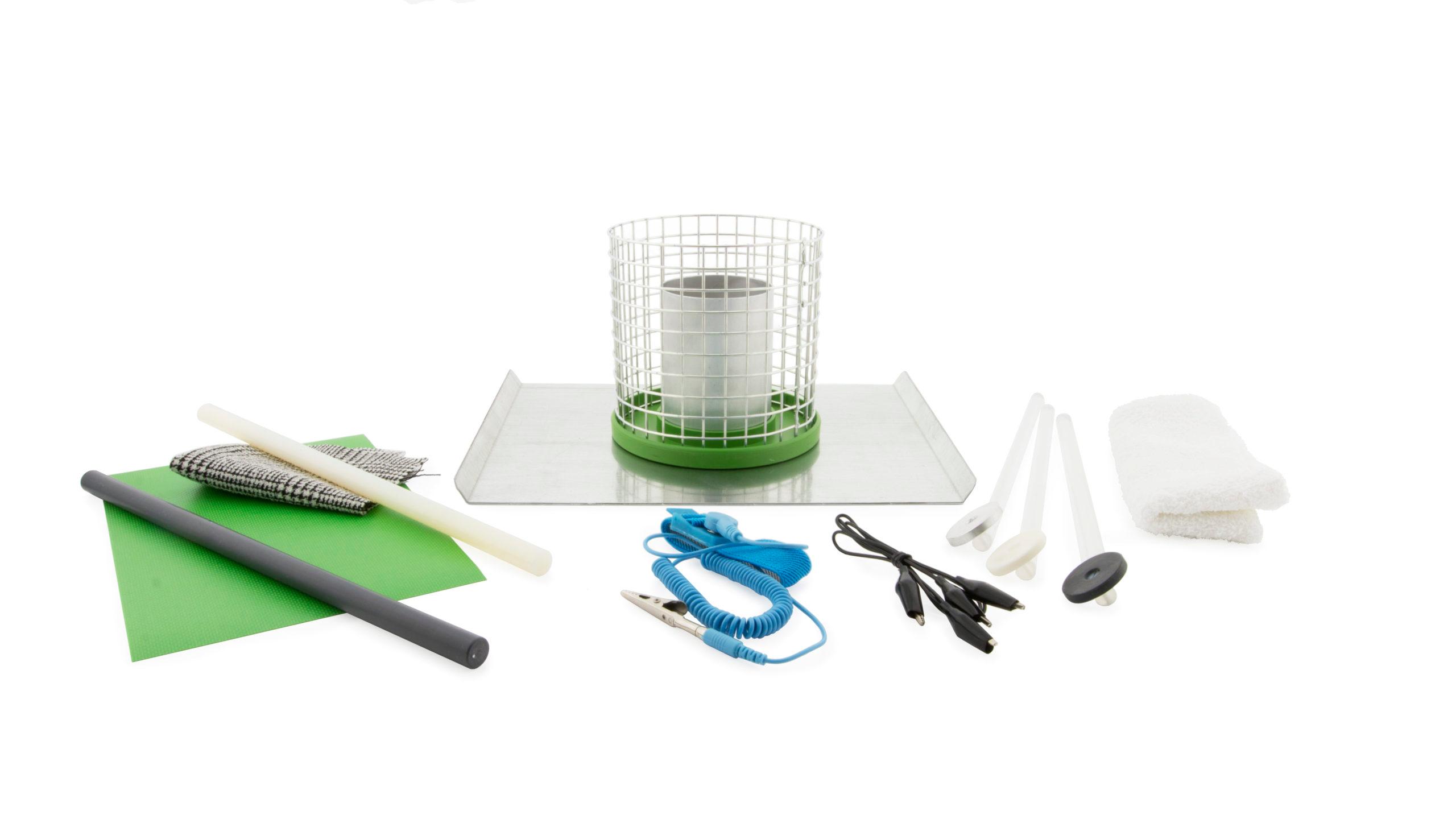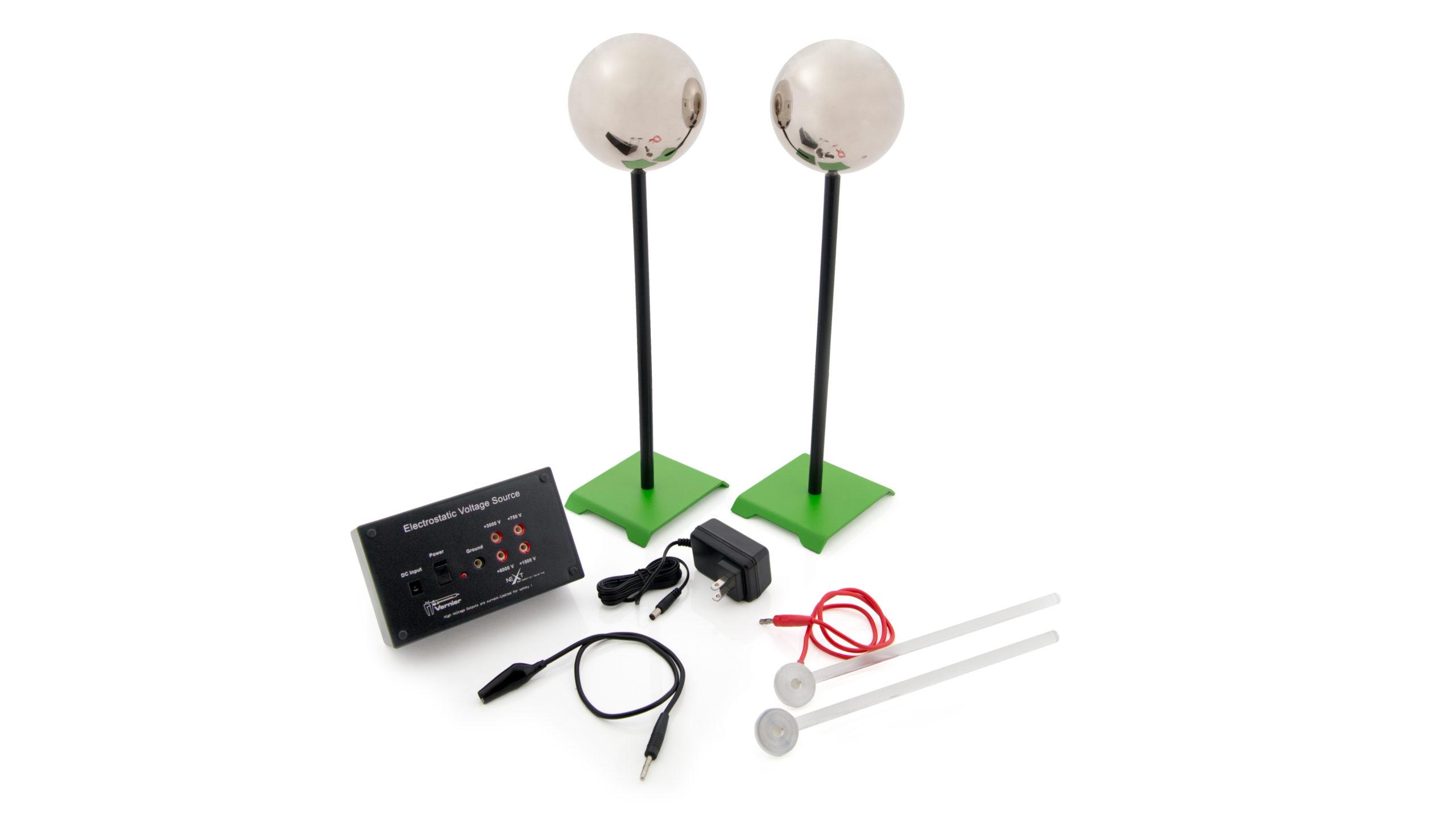Introduction
The goal of this activity is for students to develop an understanding that the electrostatic force varies according to the amount of charge present on both objects and the distance between the charges.
During the Preliminary Observations, students observe a balloon hanging from the ceiling and another held in the instructor’s hand. Both of the balloons should be charged, either with opposite charges or the same charges. The students make observations as the balloons are moved closer to one another.
Students design and execute an experiment to determine the nature of the forces between charged objects and the factors affecting the strength of the force.
Objectives
- Identify variables, design and perform investigation, collect and analyze data.
- Draw a conclusion and formulate a model that explains how force varies with charge strength or with distance separating the charges based on data from the investigation.
- Clearly explain how model explains the phenomena observed
- A realistic goal is for students to develop a model that indicates force increases with increased charge, or that force decreases with distance. Ideally, students will combine results with other groups to develop a model that demonstrates the force is proportional to the product of the charges and inversely proportional to the square of the distance between the objects.
Sensors and Equipment
This experiment features the following sensors and equipment. Additional equipment may be required.
Ready to Experiment?
Ask an Expert
Get answers to your questions about how to teach this experiment with our support team.
- Call toll-free: 888-837-6437
- Chat with Us
- Email support@vernier.com
Purchase the Lab Book
This experiment is #18 of Physics Explorations and Projects. The experiment in the book includes student instructions as well as instructor information for set up, helpful hints, and sample graphs and data.






